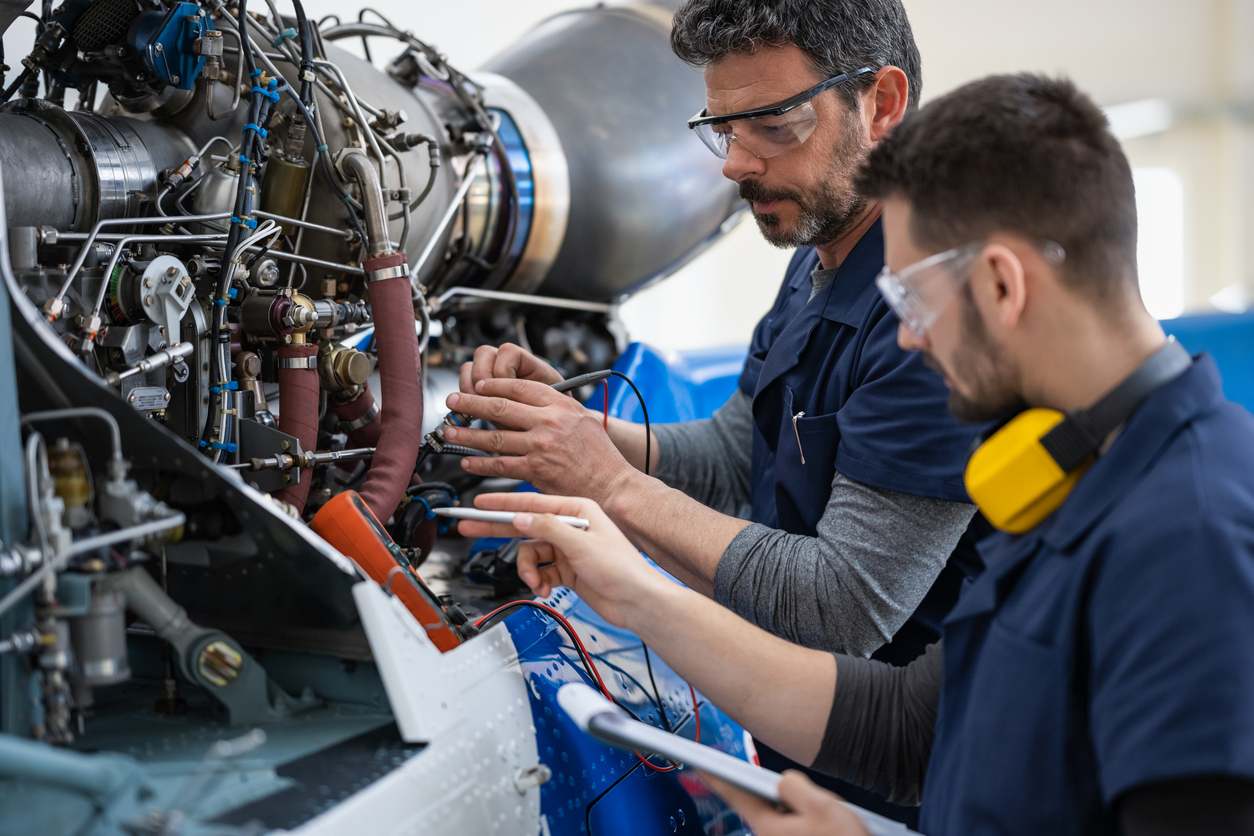M3 blog
The Importance of Synchronizing Devices in MRO

The Importance of Synchronizing Devices in MRO
MRO operations involve managing various devices, tools, and personnel, which can lead to complications without proper synchronization. When devices aren’t aligned, it causes data silos, delayed repairs, and operational inefficiencies. For instance, technicians may not have access to up-to-date equipment data, or inventory systems may misalign with maintenance schedules, leading to costly downtime.
Synchronizing devices allows MRO to streamline workflows, ensuring maintenance logs are updated in real time and technicians receive crucial updates promptly, reducing errors and delays
Benefits of Synchronizing Devices for MRO
1. Improved Efficiency and Productivity
Synchronizing devices streamlines operations by providing real-time equipment monitoring and faster maintenance processes. It reduces downtime by enabling predictive maintenance and ensuring technicians have the tools they need to act swiftly. With all personnel on a unified platform, task coordination becomes smoother, enhancing overall productivity.
2. Enhanced Data Accuracy and Decision-Making
Centralized data access allows teams to make better decisions based on accurate, real-time information. Predictive analytics helps anticipate maintenance needs, improving repair timelines and resource allocation.
3. Cost Savings
Synchronization reduces unnecessary maintenance, cuts down on manual tracking, and streamlines repetitive tasks. Automated updates minimize the need for manual interventions, leading to lower labor costs and improved resource efficiency.
Challenges in Implementing Device Synchronization in MRO
While synchronizing devices offers numerous benefits, MROs face several challenges when implementing such systems. Platform compatibility is a significant hurdle, as MROs often rely on diverse devices and operating systems, making it difficult to maintain uniformity. Security risks also arise, as synchronized systems must handle sensitive operational data, requiring robust encryption and access control measures. Additionally, ongoing system updates can disrupt workflows, as maintaining synchronization across multiple devices demands continuous IT support and coordination to prevent delays or data inconsistencies.
Case Study: Air Canada’s Journey to Synchronizing MRO Devices
As Canada’s largest airline, Air Canada faced increasing challenges in maintaining synchronization across the devices used by their MRO teams. With each aircraft requiring constant maintenance updates and compliance with evolving safety regulations, it became essential for technicians to have access to the latest documentation. However, managing mobile devices across multiple locations proved costly, resulting in delays and inefficiencies.
To resolve this, Air Canada partnered with M3 Solutions to implement the M3 Platform, designed to securely manage and synchronize mobile devices across all sites. The platform ensured that every tablet, phone, and laptop was updated in real time with the necessary maintenance documentation and the latest operating systems. This automated synchronization process allowed Air Canada’s teams to work efficiently and comply with strict regulations, minimizing downtime and improving aircraft turnaround times.
By implementing RFID-secured access, M3 Solutions also enhanced data security and device control, ensuring that only authorized personnel could access sensitive information. As a result, Air Canada reduced IT strain, improved workforce coordination, and streamlined the overall maintenance process.
Conclusion
Synchronizing devices is critical for MRO to maintain seamless operations, reduce operational costs, and enhance decision-making capabilities. While challenges such as platform compatibility, security risks, and ongoing system updates exist, the benefits far outweigh these obstacles. By ensuring that devices, data, and personnel are aligned, MRO can significantly streamline their processes, prevent downtime, and stay ahead in an increasingly competitive landscape. Leveraging solutions like M3’s platform can make all the difference in optimizing maintenance operations.




